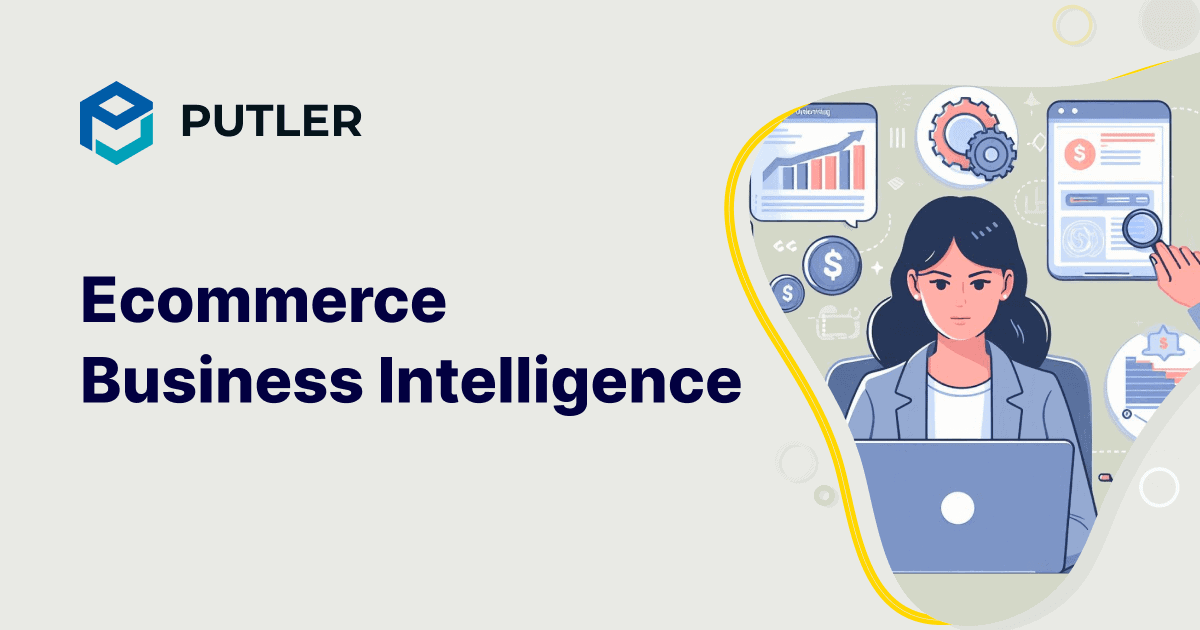Have you ever noticed how some online stores seem to have a sixth sense?
They’re always one step ahead, stocking the hottest products and attracting customers like bees to honey.
Meanwhile, you’re scratching your head, wondering how to get more eyes on your store. Well, guess what? Their secret weapon has a name, and it’s eCommerce business intelligence.
So, what’s the deal with business intelligence? Imagine having a super-smart sidekick who can crunch numbers faster than you can say “add to cart”.
That’s business intelligence for you. It’s like having a radar for your business, helping you see patterns and trends that are invisible to the naked eye.
Now, let’s break it down.
eCommerce Business Intelligence: What is it & Why it Matters?
Every year, your business is churning out a mountain of data.
Business intelligence eCommerce is like that friend who helps you sort through the mess and find the hidden treasures.
It takes all that jumbled info and turns it into wisdom that’ll help your business grow.
What is eCommerce business intelligence?
Business intelligence takes all the data your store generates – we’re talking sales figures, customer clicks, abandoned carts, you name it – and turns it into actionable insights.
It’s not just about collecting data, it’s about making that data work for you. Think of it as a smart assistant that sorts through all your sales, customer, and market data to give you clear insights.
Why does it matter?
Here’s why eCommerce business intelligence matters.
- Understanding Customer Behavior: Business intelligence eCommerce is your secret weapon for decoding customer preferences. It analyzes buying patterns and helps you identify which products customers prefer the most.
- Optimizing Inventory: Business intelligence tells exactly which product needs restocking. No more overstocking slow-moving items or running out of bestsellers. It’s all about having the right products in the right quantities at the right time.
- Enhancing Marketing Strategies: Business intelligence turns your marketing efforts from hit-or-miss to bullseye every time. It crunches the numbers on your campaigns, showing you what’s working and what’s falling flat.
- Improving Customer Experience: Want to make your customers feel like VIPs? Business intelligence helps you personalize their shopping journey. From tailored product recommendations to customized email campaigns, it helps create an experience that keeps customers coming back for more.
- Boosting Sales: Business intelligence is your ticket to smashing those sales targets. It identifies trends and opportunities that can drive your sales through the roof. Plus, it helps you spot areas where you can increase profits.
In today’s cutthroat world, business intelligence in eCommerce isn’t just a nice-to-have tool – it’s essential for survival and success.
How does eCommerce business intelligence differ from business analytics?
Imagine you’re driving a super-cool, high-tech car. That’s your eCommerce business, by the way. Now, let’s break them down.
eCommerce business intelligence
Business intelligence is like your car’s dashboard.
It’s giving you the lowdown on what’s happening right now. How fast are you going? How much fuel do you have? Is your engine running hot?
eCommerce business intelligence is all about real-time info that helps you make quick decisions. It’s like having a co-pilot who’s always on the ball, telling you when to step on the gas or ease up.
eCommerce business analytics
Business analytics, on the other hand, is like having a built-in GPS.
Sure, it knows where you are now, but it’s also crunching numbers to figure out the best route to your destination.
It’s looking at traffic patterns, road conditions, even your driving habits. BA is all about planning ahead and making those big-picture decisions. It helps you avoid traffic jams before they even happen.
So, while business intelligence is your trusty sidekick for day-to-day operations, business analytics is your strategic advisor for long-term planning. Both are awesome!
Benefits of business intelligence in eCommerce
The benefits of business intelligence in eCommerce are significant:
- Improved Decision-Making: Business intelligence gives you actionable insights. It takes your customer data, sales trends, and inventory info and turns them into clear, actionable strategies. This means you can make smart decisions quickly, keeping your business agile and responsive.
- Enhanced Customer Understanding: Business intelligence is like a window into your customers’ minds. It analyzes their behavior and preferences, allowing you to create personalized marketing strategies and top-notch customer service. The result? Happier customers who stick around longer.
- Increased Operational Efficiency: Business intelligence streamlines your operations by automating reporting processes and reducing manual data handling. It’s like having a super-efficient assistant that never sleeps, freeing you up to focus on growing your business.
- Competitive Advantage: In the fast-paced world of eCommerce, business intelligence gives you the edge. It helps you spot market trends, keep an eye on competitor strategies, and adapt your approach proactively. Stay one step ahead of the competition.
- Revenue Growth: Business intelligence is a revenue-boosting powerhouse. It identifies cross-selling opportunities, helps optimize your pricing strategies, and improves product recommendations. All of this adds up to increased sales and fatter profits.
- Real-Time Insights: Business intelligence tools for eCommerce provides real-time analytics, allowing you to react swiftly to market changes, shifts in customer behavior, and sales performance. It’s like having a finger on the pulse of your business at all times.
Business intelligence turns data into dollars, guesswork into strategy, and challenges into opportunities.
How to use eCommerce business intelligence to drive sales and growth?
Business intelligence is your secret weapon for boosting sales and accelerating growth.
Business intelligence helps you make data-driven decisions about pricing, marketing strategies, and product offerings, ensuring you’re always one step ahead of the competition.
With real-time analytics at your fingertips, you can quickly adapt to market changes and customer trends, maximizing your ROI and driving sustainable growth.
But here’s the thing – implementing business intelligence doesn’t have to be complicated.
That’s where tools like Putler come in.
Putler offers a user-friendly business intelligence solution tailored specifically for eCommerce businesses.
It brings all your crucial data into one intuitive dashboard, making it easy to spot trends, identify opportunities, and make informed decisions that propel your business forward.
Whether you’re looking to boost sales, streamline operations, or enhance customer satisfaction, Putler’s can help you achieve your goals and take your eCommerce business to new heights.
Putler: A comprehensive business intelligence and analytics tool
Putler is a business intelligence and analytics tool with numerous features. Let’s explore some of them in detail.
Analyze customer loyalty with RFM segmentation
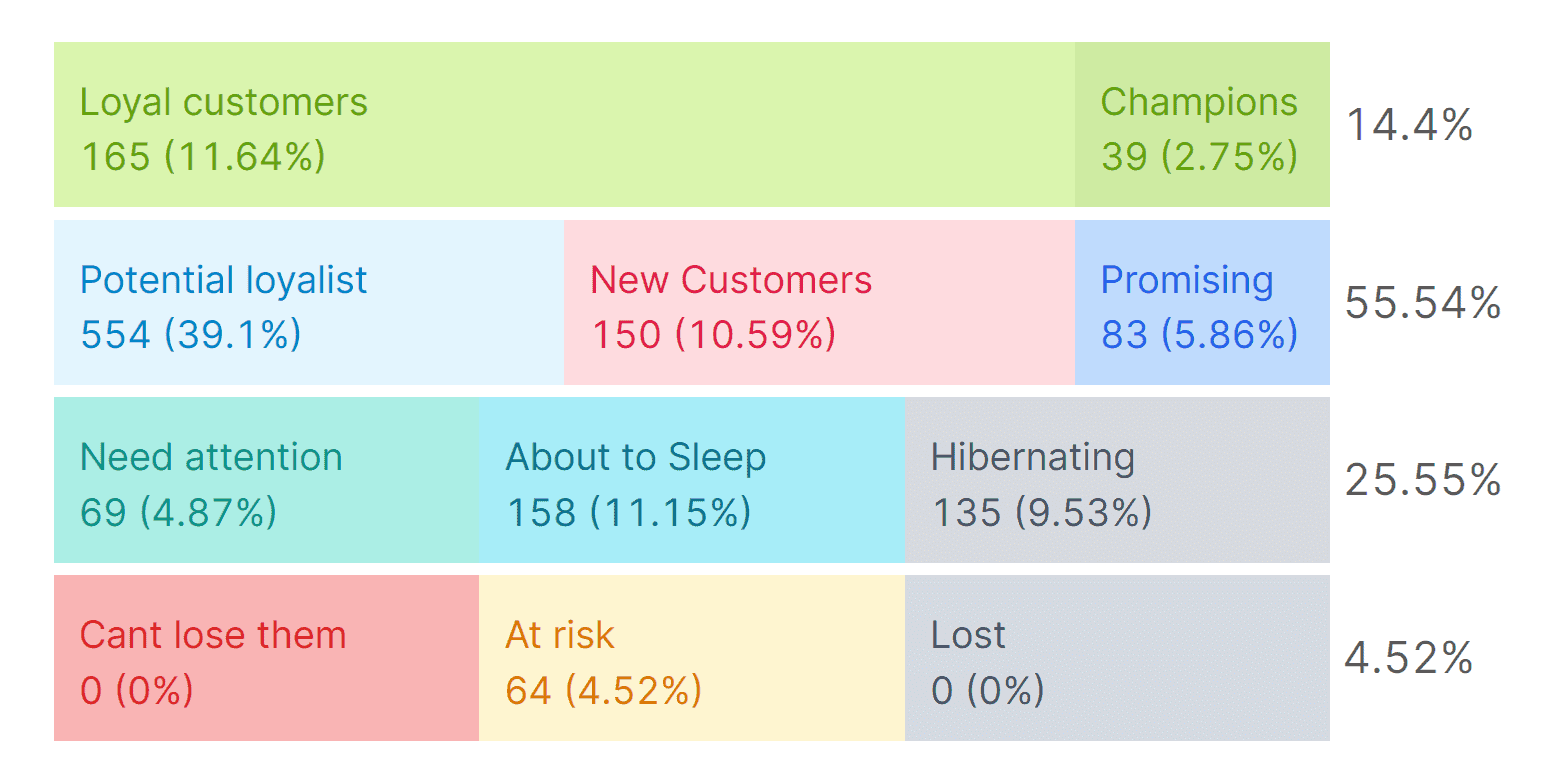
Not all customers are created equal. It’s important for businesses to understand customer segments. That’s where RFM(Recency, Frequency, and Monetary) segmentation comes in.
This powerful eCommerce business intelligence tool helps you categorize your customers based on their buying behavior, allowing you to tailor your strategies for maximum impact.
- Champions: They buy often, spend big, and have made a purchase recently.
- Loyal Customers: They’re consistent in their purchasing.
- Potential Loyalists: Relatively new customers who’ve shown higher than average engagement.
- New Customers: These are your most recent first-time buyers.
- Hibernating: Previously active customers who haven’t made a purchase in a while.
- At Risk: These customers are showing signs of decreased engagement.
Identify peak activity times with heatmaps
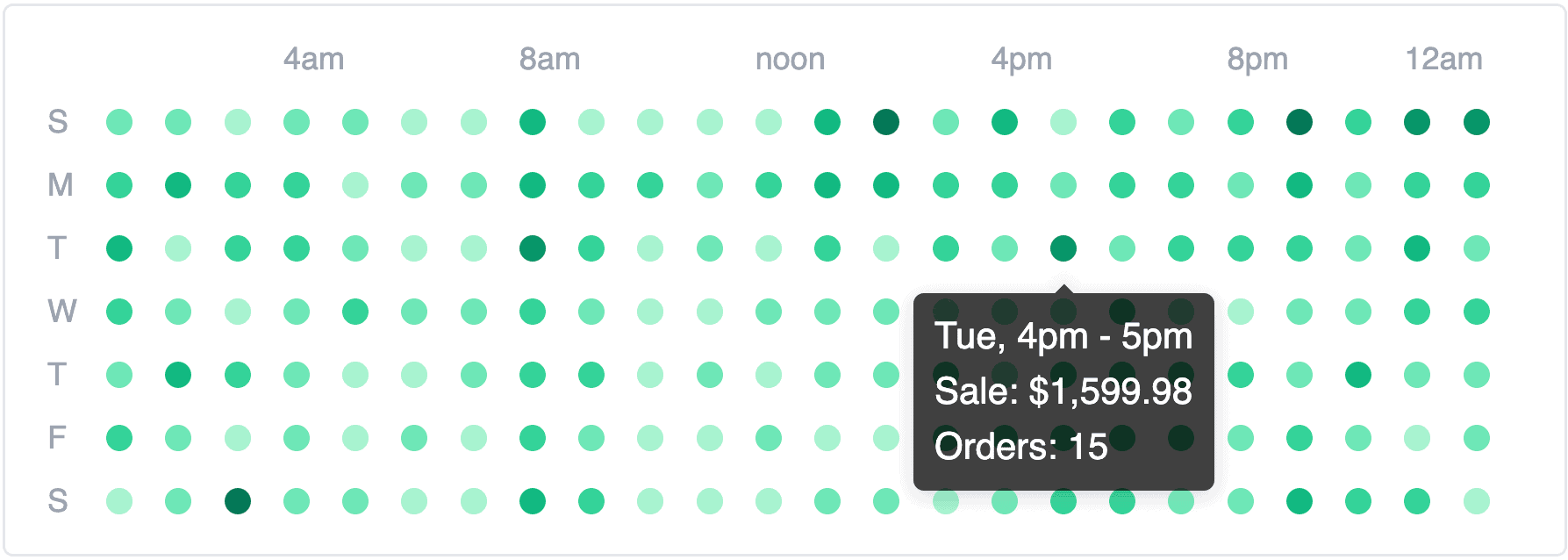
Putler’s Sales Heatmap gives you a visual representation of when your store is busiest. This feature shows you the days and times when your customers are most active and when footfalls are lesser.
Compare business metrics for improved performance
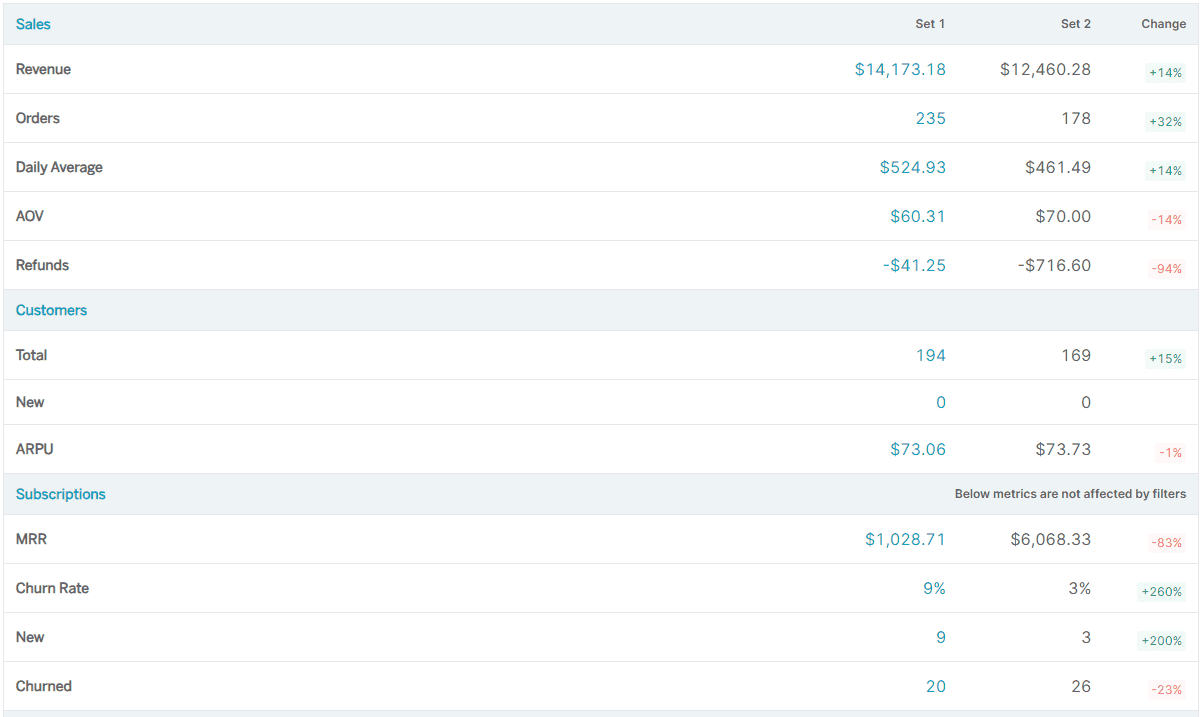
The Performance Comparison feature in the Insights dashboard allows you to put your key performance indicators side by side, making it easy to spot correlations and trends.
Uncover common product combinations
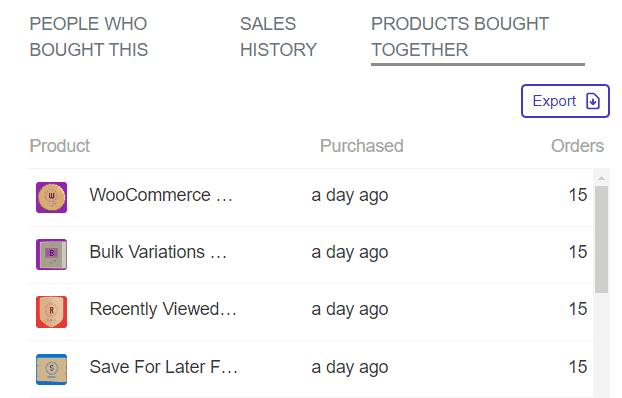
In the Products dashboard, when you click on an individual product, Putler provides extensive information about that product.
Here you can also discover which products customers frequently purchase together.
Highlight your best-selling products
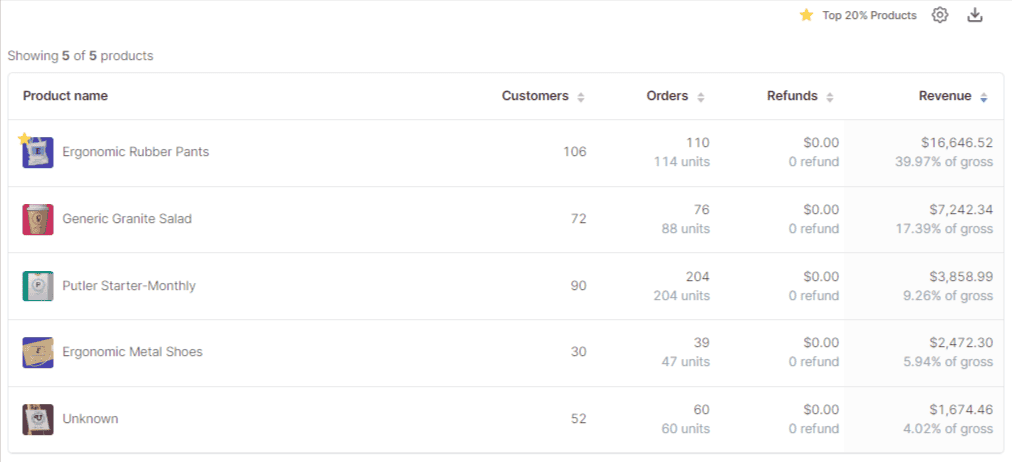
Putler helps you identify which products are driving the most revenue for your store.
There are three ways you can identify your top selling products. “Quantity Sold” filter helps track sales volume, “Revenue” sorting ranks products by total income generated, and “Order” sorting ranks products by total quantity sold.
Access comprehensive customer profiles
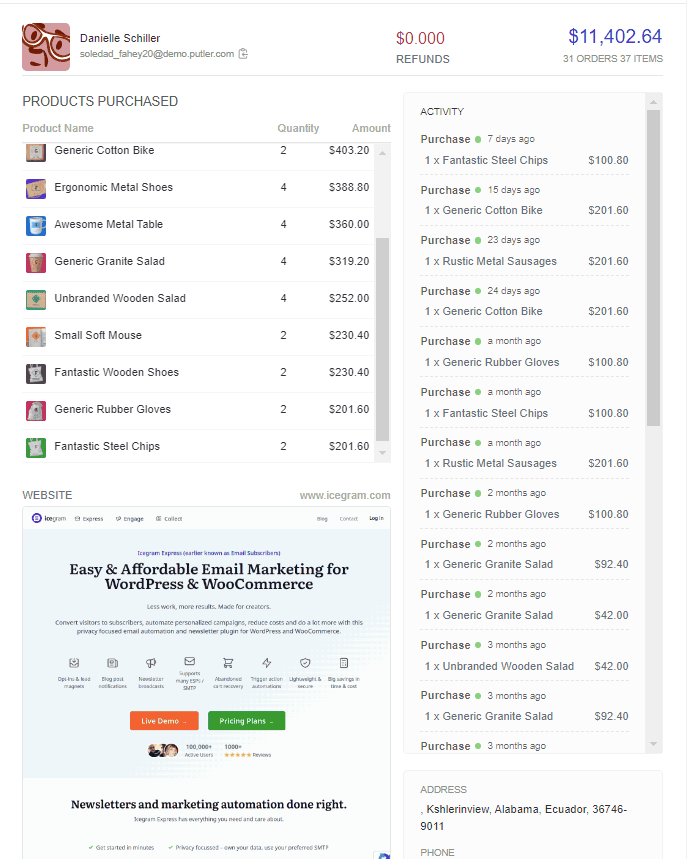
Putler provides detailed profiles for each of your customers, including their purchase history, total spending, locations, emails, phone no., and more.
Monitor real-time customer engagement
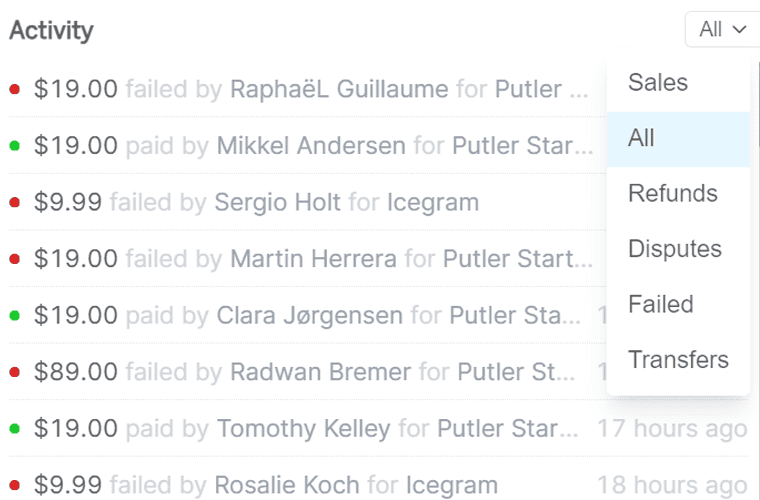
This feature provides a live view of what’s happening in your store right now, including current sales, transactions, refunds, disputes, and more. It’s like having a real-time pulse on your business operations.
Gain deeper insights into your audience
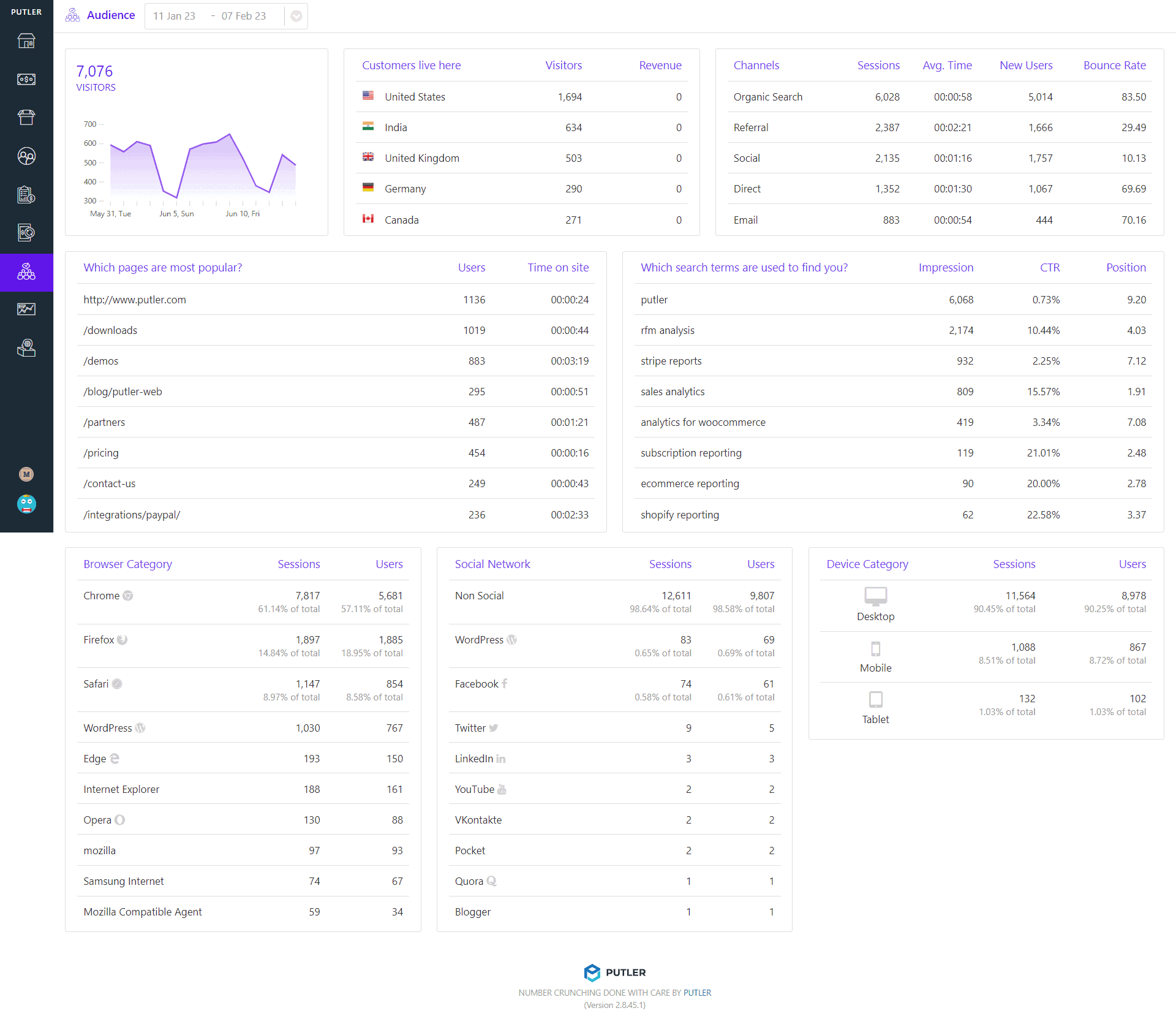
Putler has a dedicated Audience dashboard. It gives you detailed information about where your customers come from, what their search terms are, which devices they use, and much more.
Refine and filter data for precise analysis

Putler’s powerful filtering capabilities are a game-changer for eCommerce businesses looking to dive deep into their data.
With dedicated filters in every dashboard – including customers, products, sales, and transactions – you can slice and dice your data to uncover valuable insights.
Wrapping it up!
Data is king. But data alone isn’t enough.
You need the right tools to turn that data into actionable insights. That’s where eCommerce business intelligence comes in, and more specifically, that’s where Putler shines.
It’s not just about presenting data – it’s about helping you understand what that data means for your business and how you can use it to drive growth.
Putler takes these business intelligence principles and packages them into a user-friendly, powerful tool designed specifically for eCommerce.
Remember, in eCommerce, knowledge truly is power. By leveraging the power of business intelligence through tools like Putler, you’re not just keeping up with the competition – you’re positioning yourself to lead the pack.
So why wait? Dive into the world of eCommerce business intelligence and watch your online store soar to new heights.
